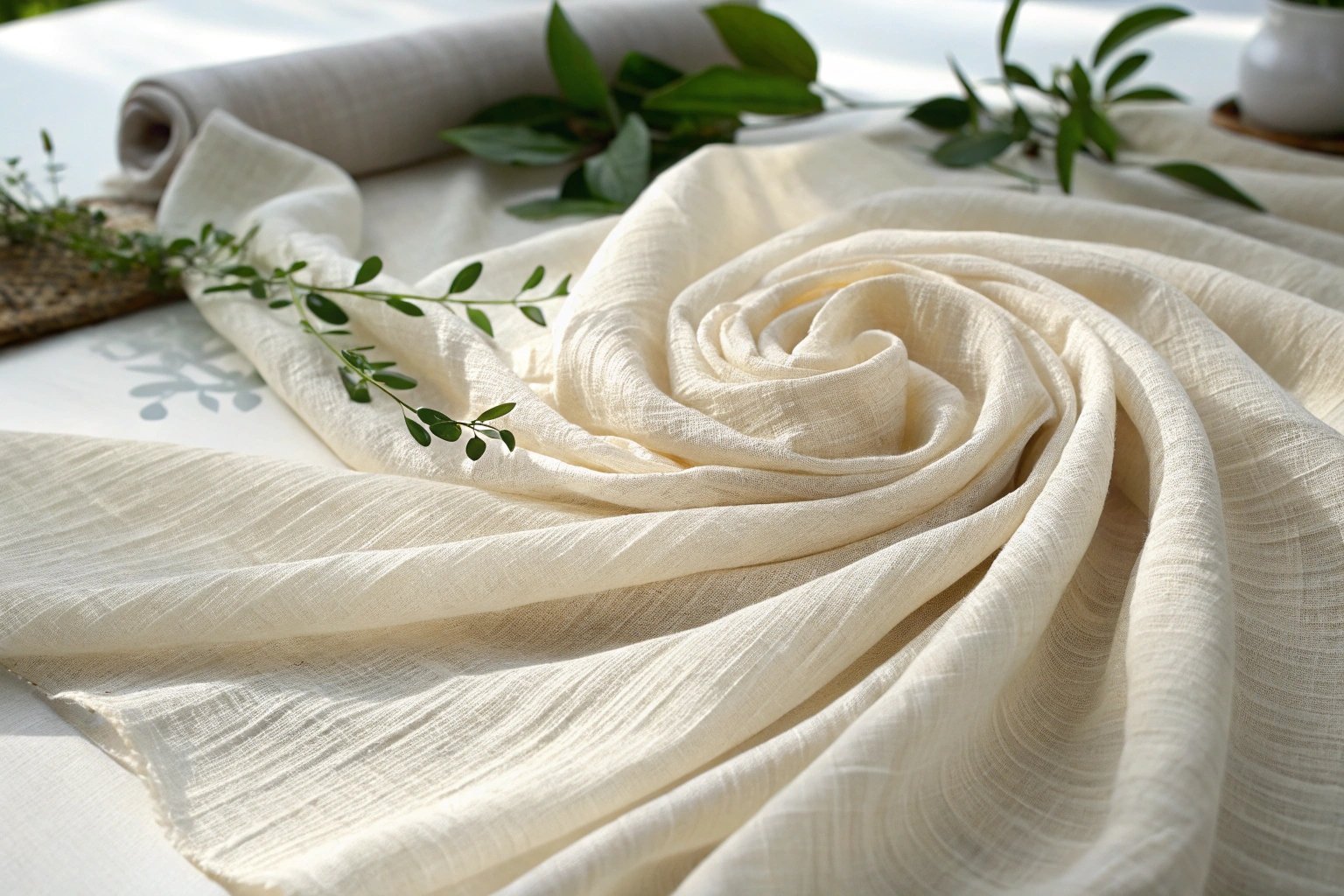Muslin fabric is widely known for its softness, breathability, and versatility. It’s commonly used for baby clothes, summer garments, and even home items. But what makes muslin truly special?

Muslin fabric is lightweight, breathable, and soft, making it ideal for comfortable, warm-weather clothing. It’s commonly used for everything from baby clothes to light summer dresses.
Muslin is a fabric that’s loved by many for its unique qualities. It’s soft and breathable, making it perfect for those looking for lightweight, comfortable clothing. Let’s explore what makes muslin stand out, how to select the right muslin for your needs, and what to watch out for when buying this popular material.
What is special about muslin fabric?
Muslin is a fabric that’s celebrated for its soft, breathable texture, making it perfect for warm-weather clothing. It’s made of cotton, which contributes to its light, airy feel. This fabric is often used for baby clothing and summer dresses because it’s gentle on the skin and keeps the body cool.
What truly sets muslin apart is its versatility. It’s not only used in clothing but also in various industries, including healthcare and home decor. Its breathable nature makes it ideal for wearing in hot climates, and it’s lightweight enough to drape beautifully, whether in a dress or as a curtain.
Another unique characteristic of muslin is its ability to be easily washed. It’s durable, and despite its softness, it can withstand frequent washing, making it a great choice for items that need to hold up over time, like baby clothes and bedding.
How to choose muslin fabric?
When selecting muslin fabric, there are a few factors you’ll want to consider to ensure you pick the right one for your project. Muslin comes in various weights and thread counts, so it’s important to think about the end use.
Here’s a breakdown of what to look for:
| Factor | What to Look For | Best Use Case |
|---|---|---|
| Thread Count | Higher thread count for a smoother, finer feel | Baby clothes, lightweight garments |
| Weight | Lighter weight for summer wear, heavier weight for durability | Summer dresses, upholstery |
| Pre-Shrunk | Pre-washed fabrics to prevent shrinkage | Garments that need precise fit |
| Color | Natural (undyed) or dyed versions | Dyeing projects or ready-to-wear |
For lightweight clothing like summer dresses or baby clothes, you’ll want a finer weave, which is softer and more breathable. If you’re working on something that requires durability, such as curtains or upholstery, look for a thicker variety. Be sure to check if the fabric has been pre-shrunk, as muslin tends to shrink after washing. This can affect the final fit of any garment, so it’s always good to know if the fabric is pre-washed.
The color of muslin also varies. Some versions come in natural, off-white shades, while others are dyed in various colors. If you plan to dye the fabric yourself, the undyed version will absorb colors better.
What are the disadvantages of muslin fabric?
While muslin offers many benefits, there are a few drawbacks to keep in mind. One of the main disadvantages of muslin is its tendency to wrinkle easily. If you’re looking for a fabric that stays neat without much maintenance, muslin may not be the best choice. You’ll need to steam or iron it regularly to keep it looking fresh.
Additionally, muslin can be delicate, particularly in its lighter versions. This means it can tear or wear out more quickly than heavier fabrics. If you plan to use muslin for garments that will undergo a lot of wear and tear, it might not be the most durable option.
Another downside is muslin’s limited warmth. While it’s perfect for warm weather because it’s breathable, it doesn’t provide much insulation, so it’s not suitable for colder climates. If you’re looking for something to keep you warm, you may need to layer it with other fabrics or choose a different material.
Lastly, muslin tends to shrink after washing, which can be problematic if you haven’t pre-washed the fabric. This shrinkage may impact the fit of your finished garment, so it’s something to watch out for when choosing muslin for your project.
Key Disadvantages:
- Wrinkles easily: Requires regular steaming or ironing.
- Delicate nature: Can tear or wear out faster in lighter versions.
- Limited warmth: Not suitable for cold weather wear.
- Shrinkage: Muslin tends to shrink, so pre-washing is important.
How to identify muslin cloth?
Identifying muslin cloth is fairly straightforward once you know what to look for. First, muslin has a soft, airy texture that feels light and breathable against the skin. It’s usually made from cotton, which gives it its distinctive softness.
Muslin fabric typically has a plain weave, giving it a slightly rough texture compared to smoother fabrics. The thread count can vary depending on the quality, with higher thread counts creating a smoother, more refined fabric. If you feel the fabric, it should feel light and breathable without being too delicate or rough.
The color of muslin is usually an off-white or natural shade, though it can also be found in dyed versions. If the fabric has a dull, uneven color, it’s likely muslin. Additionally, muslin can range in thickness. Lighter versions are ideal for clothing, while heavier muslin can be used for things like upholstery or even medical bandages.
Conclusion
Muslin fabric is highly valued for its softness, breathability, and versatility. Whether it’s used in baby clothing, summer garments, or even home decor, muslin’s lightweight nature and comfort make it a go-to material. Keep in mind its limitations, like wrinkling and shrinkage, when selecting it for your projects. By understanding its unique qualities and how to choose the right type of muslin, you can make the most out of this fabric in your designs and creations.

